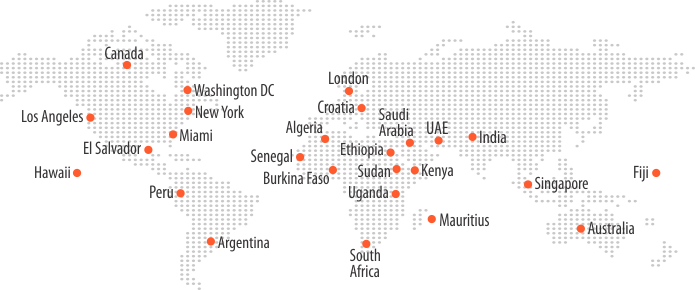VoIP Call Drops: 5 Popular Ways to Deal with Them

The quality and reliability of calls placed over the internet keep getting better. VoIP technology is more flexible, cost-effective, scalable, and secure than the traditional phone line. These benefits are driving businesses to use VoIP-based phone systems for their overall communication needs. It is estimated that the value of global VoIP services will reach $102.5 billion in 2026 from $85.2 billion in 2021. This massive shift can be attributed to the fact that VoIP helps businesses save 50% of telecom costs while also making them futureproof with cloud and AI.
Despite its many benefits, businesses may experience VoIP call dropping issues repeatedly. Call dropping is not new and VoIP phone systems are not completely impervious to it. VoIP call drops may occur due to various technical reasons, from hardware issues to network fluctuations. There can be nothing more frustrating than having a call end in the middle of a conversation with your hard-earned prospects. Call drops can cost your business and customers a lot more money than what is apparent either as lost clients or contracts.
Thus, it becomes necessary to address the underlying technical issues that are preventing you from having an uninterrupted conversation. Following is a quick guide on how to identify the most common causes of VoIP call drops and different techniques to fix those issues.
Most Common Causes of VoIP Call Drops and How to Deal with Them
Insufficient Bandwidth
This can occur due to two main reasons. Either your internet connection is unstable or other applications on your network are overloading the bandwidth. This results in choppy audio or broken voice.
Solution: Improve your internet speed
Reset your network device for a better flow of bandwidth. You can configure your router to prioritize VoIP calls with Quality of Service settings. For better performance, you may also consider terminating unwanted applications running on your device’s background to reduce bandwidth consumption.
Out-of-Order SIP Timers
Session Initiation Protocol (SIP) timers allow the phone system to confirm whether the session is still active. It does so by sending repeated update requests from time to time, like every 30 seconds or every 10 minutes. An out-of-order SIP timer often ends the call when the expected message doesn’t turn up on time.
Solution: Increase the session time
To resolve the SIP timer issue, adjust the Min-SE settings on your network device. You can also ask your VoIP provider to increase or remove limits for each call session. Sometimes the system automatically disconnects after a set number of minutes to avoid invalid open calls. In that case, you need to extend the UDP timeout duration in your router settings.
Software or Hardware Malfunction
You might experience persistent dropped calls because of damaged router or headset. This may also happen if your VoIP software is incompatible.
Solution: Upgrade your VoIP software and hardware
To enjoy crystal-clear and uninterrupted VoIP calls, you must replace malfunctioning network devices. Similarly, your VoIP software needs to be updated from time to time.
Signal Loss
Losing a signal will disconnect your VoIP calls immediately. This may happen because of many reasons, like poor internet connectivity, and blocked signals.
Solution: Switch to a wired connection or adjust signal reception
Sometimes even restarting your router can tune the bandwidth for a balanced distribution of the signal among all your devices. You can place your router at a better location and try to keep it away from large objects like TV and cabinets. If you still don’t receive signals properly, you might have to resort to using an Ethernet cable.
RTP Silence
VoIP systems allow a minimum of 30 seconds of silence before dropping the call. Real-time Transport Protocol (RTP) searches the media stream for the audio signal and suspects it to be an ‘orphan call’ if it finds none. A little noise suffices to keep the call alive. However, erroneous silence suppression or Voice Activity Detection (VAD) settings can restrict the transmission of audio altogether.
Solution: Change silence suppression or VAD settings
You need to alter the VAD settings in your devices to avoid erroneous detection of ‘orphan calls’ while you are not talking. Thus, your system will catch little background noise and keep the session going.
Optimize Your Call Setup Success Rate with Crystal-clear VoIP Services
Communication is a fundamental business activity for any enterprise. VoIP provides the best means to handle your calls with additional features that can lift your business communication to a whole new level. To meet all your communication needs, you must choose the right VoIP service provider that has the least dropped call rates (DCR). Otherwise, it may cost you a potential client.
BridgeVoice Pluto is an automated carrier platform that allows wholesale VoIP service providers to offer uninterrupted and high-end VoIP calls from anywhere in the world.
Related Posts
The Impact Of SDN On VoIP Implementations
How To Optimize VoIP Call Quality With Quality Of Services






